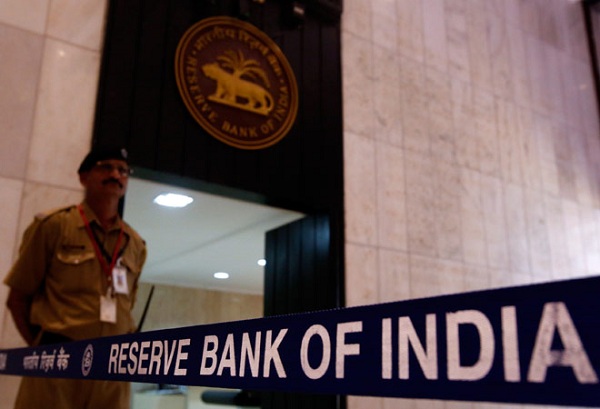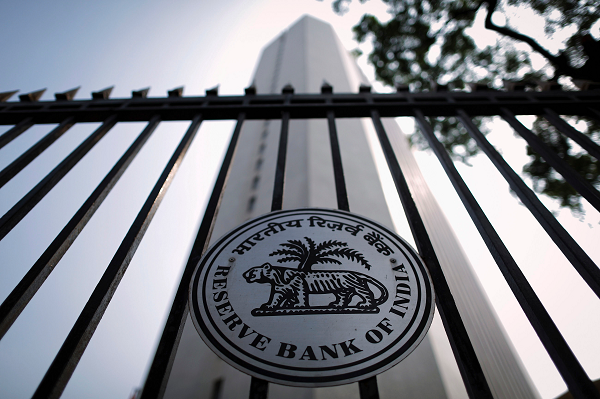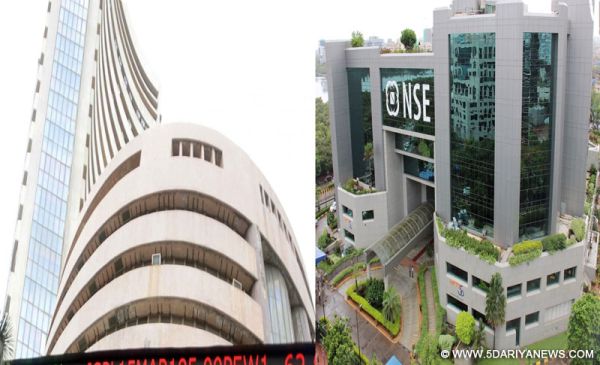
by admin | May 25, 2021 | Banking, Corporate, Corporate finance, Economy, News
 New Delhi : Representatives from the 11 public sector banks, which are under RBI scanner for mounting bad loans on Tuesday, assured a parliamentary panel that “things would start looking up from next year” and by 2020, they would be able to come out of the austerity regime imposed by the central bank on them, sources said.
New Delhi : Representatives from the 11 public sector banks, which are under RBI scanner for mounting bad loans on Tuesday, assured a parliamentary panel that “things would start looking up from next year” and by 2020, they would be able to come out of the austerity regime imposed by the central bank on them, sources said.
The Parliamentary Committee on Finance headed by senior Congress leader M. Verappa Moily in its meeting held on Tuesday heard out 11 banks — IDBI Bank, Allahabad Bank, Bank of India, Oriental Bank of Commerce, UCO Bank, Central Bank of India, Indian Overseas Bank, Dena Bank, Bank of Maharashtra, United Bank of India and Corporation Bank.
The Committee is looking into ‘Banking Sector in India- Issues, Challenges and the Way Forward, including Non-Performing Assets/Stressed Assets in Banks/Financial Institutions’.
Senior representatives from these banks also answered the queries of the committee.
One of the concerns discussed during the meeting was the “stagnation” in the lending process as these banks “are not able to lend money”, resulting in “no income” to them, according to sources.
It also emerged that there was a “lot of fear” among the bankers of institutions like the Comptroller and Auditor General (CAG), Central Bureau of Investigation (CBI), Enforcement Directorate (ED) etc and bank officials are shunning action.
The Reserve Bank of India (RBI) has imposed the Prompt Corrective Action (PCA) framework on banks reeling under bad-debt under which banks face restrictions on distributing dividends and remitting profits.
Besides, there are restrictions on expanding their branch networks and remuneration of directors.
Since the banks have to comply with the Basel III international norms on capital adequacy and make provision for non-performing assets, it too has constricted lending space.
The total NPAs have touched around nine lakh crore rupees or 10.11 per cent of total advances at December-end 2017.
The parliamentary panel also desires that RBI Governor Urjit Patel should appear before it “at least twice a year if not more” to brief the Committee on the state of economy, a source said.
—IANS

by admin | May 25, 2021 | News, Politics
 Mumbai : The Shiv Sena pounced on the Bharatiya Janata Party (BJP) on Saturday, seeking to know “what action the (current) Finance Minister Piyush Goyal has taken against the RBI governor and chiefs of banks” which have been defrauded by big industrialists who have fled the country.
Mumbai : The Shiv Sena pounced on the Bharatiya Janata Party (BJP) on Saturday, seeking to know “what action the (current) Finance Minister Piyush Goyal has taken against the RBI governor and chiefs of banks” which have been defrauded by big industrialists who have fled the country.
“How many bank chairmen who gave fraudulent loans have been sent to jail? Even the BJP President Amit Shah is the Director of Ahmedabad District Cooperative Bank… It collected Rs 745.59 crore of spiked (Rs 500 – Rs 1,000) notes within five days after demonetisation,” the Sena asked.
It said that a Gujarat cabinet minister Jayesh V. Radadia is a Chairman (of Rajkot DCB), which also secured the second highest amount in the country after ADCB – Rs 693.19 crore deposits of the old currency notes.
“How could so much money be deposited in just one (ADCB) bank? This is a serious issue and must be probed in depth,” the Sena said in sharp edits in the party mouthpieces ‘Saamana’ and ‘Dopahar Ka Saamana’.
Accusing Goyal of not viewing the issue with the seriousness it deserves, the BJP’s ally said that there was discrimination among the cooperative banks and different sets of rules were applied while dealing with various DCCBs in the country.
The Maharashtra DCCBs were debarred from exchanging/accepting the old notes, which was subsequently withdrawn, but it served to hit the banks’ economic position very badly, the Sena pointed out.
“For instance, the Nashik DCB’s deposits of Rs 341 crore was declared asuspicious’ and frozen in the bank. Other DCCBs also faced similar issues at that timea Demonetization triggered massive chaos in all sectors of the economy,” the Sena edit said.
“The country is today reeling under the impact of that demonetisation… The Reserve Bank of India Governor (Urjit Patel) is the biggest culprit for this mess and he should be prosecuted for it,” the Sena demanded.
Recalling the former RBI Governor Raghuram Rajan’s observations on the issue, the Sena reiterated that “the country has paid a heavy price for demonetisation”, the unorganised sector is in complete disarray, unemployment has increased and many others lost their jobs.
The ruling ally reminded how the country was told that “terrorism would end in Jammu and Kashmir after demonetisation, but in reality, the very next day after the Prime Minister Narendra Modi’s announcement on November 8, 2016, bundles of fake Rs 2,000 currencies, newly introduced, were found in that state.”
The Sena said the country is experiencing an economic mess which is increasing, and even the government’s financial advisor Arvind Subramaniam has quit and left the country.
“Amidst all this, the government is displaying its power to the public sector Bank Of Maharashtra (whose top officials including the CMD and ED were arrested this week)a This is cheating since the big fish have already absconded. The BoM officials and the builder D.S. Kulkarni (an accused in the case) have been caught and will not go anywhere… Congratulations for your tough action,” the Sena added.
—IANS

by admin | May 25, 2021 | Banking, Economy, Markets, News
 By Rituraj Baruah,
By Rituraj Baruah,
Mumbai : The Reserve Bank of India’s (RBI) decision to hike the repo rate by 25 basis points boosted the investor sentiments, which in turn lifted the key equity indices during the week ended on Friday.
Weak global cues and depreciation in the rupee, however, weighed on the indices and limited the gains during the week.
The barometer 30-scrip Sensitive Index (Sensex) of the BSE rose by 216.41 points or 0.61 per cent to close at 35,443.67 points on a weekly basis.
The wider Nifty50 of the NSE closed the week’s trade at 10,767.65 points — up 71.45 points or 0.67 per cent — from its previous close.
“Market sentiments got a boost as RBI retained its neutral policy stance raising hopes that probably there would be no more rate hikes in the near future,” said Rahul Sharma, Senior Research Analyst at Equity99.
Hem Securities’ Director, Prateek Jain said: “This was a week of two halves for the market. The first saw the market falling in anticipation of a rate hike by the central bank.”
“But when the RBI announced a rate hike markets shot up and recovered the losses. In fact, it closed 0.6 per cent higher than the previous week despite a 25 basis points hike announced by the central bank,” he added.
Following a cycle of rate cuts begun in January 2015, the RBI on Wednesday raised its key interest rate for the first time by 25 basis points to 6.25 per cent.
“The reverse repo rate under the liquidity adjustment facility (LAF) stands adjusted to 6 per cent and the marginal standing facility (MSF) rate and the Bank Rate to 6.50 per cent,” the RBI had said.
Rupee meanwhile hit a one month low of 67.54 during the week due to an appreciation of the dollar against all major currency and outflows of funds from India, Jain said.
On Friday, the rupee closed at 67.51 against the US dollar depreciating by 45 paise from its previous week’s close of 67.06 per greenback.
In terms of investments, provisional figures from the stock exchanges showed that foreign institutional investors bought scrips worth Rs 1,367.22 crore, while the domestic institutional investors purchased stocks worth Rs 2,131.56 crore during the week.
Figures from the National Securities Depository (NSDL) revealed that foreign portfolio investors (FPIs) invested equities worth Rs 3,757.94 crore, or $560.40 million, in the week ended on June 8.
The top weekly Sensex gainers were Sun Pharma (up 9.38 per cent at Rs 528.20); Tata Motors (up 7.96 per cent at Rs 310.05); Tata Motors (DVR) (up 7.96 per cent at Rs 186.20); Tata Steel (up 6.99 per cent at Rs 599.50); and Dr Reddy’s Lab (up 6.26 per cent at Rs 2,062.90 per share).
The major losers were Power Grid (down 3.59 per cent at Rs 198.50); HDFC Bank (down 2.82 per cent at Rs 2,050.10); Larsen and Toubro (down 2.02 per cent at Rs 1,343.60); Adani Ports (down 1.98 per cent at Rs 379.50); and NTPC (down 1.64 per cent at Rs 161.55 per share).
(Rituraj Baruah can be contacted at rituraj.b@ians.in)
—IANS

by admin | May 25, 2021 | Banking, Economy, Markets, News
 Mumbai : Following a cycle of rate cuts begun in January 2015, the RBI on Wednesday raised its key interest rate for the first time by 25 basis points (bps) to 6.25 per cent, responding to concerns on inflation from surging global crude oil prices, as per a central bank announcement.
Mumbai : Following a cycle of rate cuts begun in January 2015, the RBI on Wednesday raised its key interest rate for the first time by 25 basis points (bps) to 6.25 per cent, responding to concerns on inflation from surging global crude oil prices, as per a central bank announcement.
The Reserve Bank of India (RBI), however, maintained its ‘neutral’ stance on policy, as it has done over four previous bi-monthly policy reviews when it held the repo, or its short term lending rate for commercial banks, at 6 per cent. This stance allows the RBI to move either way on rates.
“The decision of the Monetary Policy Committee (MPC) is consistent with the neutral stance of monetary policy in consonance with the objective of achieving the medium-term target for consumer price index (CPI) inflation of 4 per cent within a band of +/- 2 per cent,” the RBI statement said.
“Consequently, the reverse repo rate under the liquidity adjustment facility (LAF) stands adjusted to 6.0 per cent, and the marginal standing facility (MSF) rate and the Bank Rate to 6.50 per cent.”
Addressing the media following the policy announcement, RBI Governor Urjit Patel elaborated that the neutral stance allowed various options to the central bank and was not in contradiction to raising rates.
“The neutral stance leaves all options open… other central banks do the same, there is no contradiction here,” he said in response to a query.
“We have kept the neutral stance as well as responded to the risks to inflation visible in recent months. Inflation has remained over the target level of 4 per cent for over six months,” he added.
The six-member MPC voted unanimously for the rate hike that the central bank was undertaking after more than four years and comes for the first time under the Prime Minister Narendra Modi-led government.
The RBI also revised upwards the retail inflation range to 4.8-4.9 per cent in the first half of 2018-19, and to 4.7 per cent in the second half, including the impact of house rent allowance (HRA) for central employees, and with risks on the upside.
“The April-May prints show that inflation, excluding food and fuel has hardened. Higher oil prices and input costs have added to the upside risks,” RBI Deputy Governor Viral Acharya said.
“On the other hand, growth indicators show that economic revival is on sound footing. Given the inflation target of 4 per cent, it seemed the right time for the MPC to consider a hike of 25 basis points,” he added.
The country’s retail inflation rose to 4.58 per cent in April from a rise of 4.28 per cent in March and 2.99 per cent in the corresponding period of the previous year.
The fourth quarter estimate of Gross Domestic Product (GDP) released by the Central Statistics Office last month estimated the growth rate at 7.7 per cent, as against 5.6 per cent, 6.3 per cent and 7 per cent respectively in the first three quarters.
Recent crude oil price volatility imparts considerable uncertainty to the inflation outlook, the RBI said.
“Since the MPC meeting in early April, the price of the Indian basket of crude surged from $66 a barrel to $74. This, along with an increase in other global commodity prices and recent global financial market developments, has resulted in a firming up of input cost pressures,” the statement said.
To arrive at this decision, the MPC extended its deliberations this time by an extra day.
Commenting on the development, Deloitte India Partner Anis Chakravarty said in a statement: “The RBI was cautious on the factors that could change the course of the underlying optimism, major among them being the projections on oil price movement and rising geopolitical tensions.
“However, given that the committee has maintained a neutral stance, there remains room for manoeuvrability in policy perspective should incoming data show sharp fluctuations.”
“Recent hike in crude prices and better GDP for last quarter of FY 18 suggest inflation trajectory may be on the higher side. Though, this may put some pressure on borrowers, it is positive news for the savers in the economy,” said Arihant Capital Markets Director Anita Gandhi.
—IANS

by admin | May 25, 2021 | Economy, Markets, News
 Mumbai : Caution ahead of the RBI’s monetary policy review, along with negative macro-economic data point, depressed the key Indian equity indices on Tuesday.
Mumbai : Caution ahead of the RBI’s monetary policy review, along with negative macro-economic data point, depressed the key Indian equity indices on Tuesday.
According to market observers, heavy selling pressure was witnessed in the capital goods, consumer durables and IT stocks.
Index-wise, the broader Nifty50 of the National Stock Exchange (NSE) closed at 10,593.15 points — down by 35.35 points, or 0.33 per cent — from its previous close.
Similarly, the barometer 30-scrip Sensitive Index (Sensex) settled in the red. It opened at 35,029.45 points, closed at 34,903.21 points — lower by 108.68 points, or 0.31 per cent — from its previous session’s close of 35,011.89 points.
Sensex touched a high of 35,073.12 points and a low of 34,784.68 points during the intra-day trade.
“Markets corrected further on Tuesday after a volatile trade session. It was the third consecutive session of losses for the Nifty,” said Deepak Jasani, Head of Retail Research at HDFC Securities.
“Broad market indices like the BSE Mid Cap and Small Cap indices fell more, thereby underperforming the main indices.”
Geojit Financial Services Head of Research Vinod Nair said: “Consolidation continued as investors turned cautious ahead of RBI monetary policy and rupee is marginally weak due to liquidity constraint.”
“Investors are expecting a status quo on policy rates, but RBI’s commentary would be keenly watched. The elevated levels of crude will influence RBI’s stance on inflation. Earnings cycle is yet to pick up while the divergence in expectation and actual results could trigger downgrades in FY19 estimates.”
The RBI’s MPC began its three-day meet from June 4 to 6 here on Monday. It is expected to announce the second monetary policy review for 2018-19 on Wednesday.
Further, analysts said that investor sentiments were subdued after seasonally adjusted Nikkei India Services Business Activity Index showed a contraction in last month’s output.
On the currency front, the Indian rupee weakened against the US dollar to 67.15, from its previous close at 67.12 per greenback.
Investment-wise, provisional data with exchanges showed that foreign institutional investors sold scrip worth Rs 157.51 crore, while the domestic institutional investors bought stocks worth Rs 474.33 crore.
Sector-wise, the S&P BSE capital goods index fell by 362.23 points, the consumer durables index was down by 278.27 points and the IT index ended 203.06 points lower.
On the other hand, S&P BSE oil and gas index gained 14.85 points followed by the energy index which inched up by 9.94 points.
The major gainers on the Sensex were Reliance Industries, up 0.90 per cent at Rs 947.85; Tata Steel, up 0.88 per cent at Rs 571.95; HDFC, up 0.78 per cent at Rs 1,847.05; Maruti Suzuki, up 0.69 per cent at Rs 8,810.35; and HDFC Bank, up 0.68 per cent at Rs 2,060.55 per share.
The top losers were Coal India, down 2.36 per cent at Rs 285.40; Bharti Airtel, down 2.16 per cent at Rs 363.80; Larsen and Toubro, down 1.93 per cent at Rs 1,344; Dr Reddy’s Labs, down 1.87 per cent at Rs 1,959.60; and Yes Bank, down 1.84 per cent at Rs 336.70 per share.
—IANS

 New Delhi : Representatives from the 11 public sector banks, which are under RBI scanner for mounting bad loans on Tuesday, assured a parliamentary panel that “things would start looking up from next year” and by 2020, they would be able to come out of the austerity regime imposed by the central bank on them, sources said.
New Delhi : Representatives from the 11 public sector banks, which are under RBI scanner for mounting bad loans on Tuesday, assured a parliamentary panel that “things would start looking up from next year” and by 2020, they would be able to come out of the austerity regime imposed by the central bank on them, sources said.



